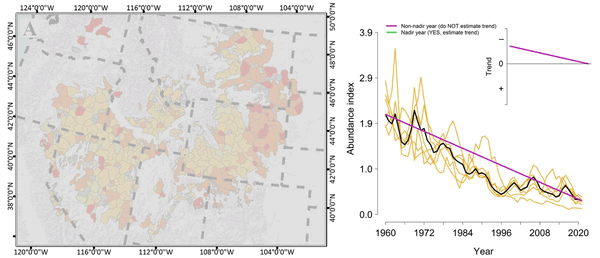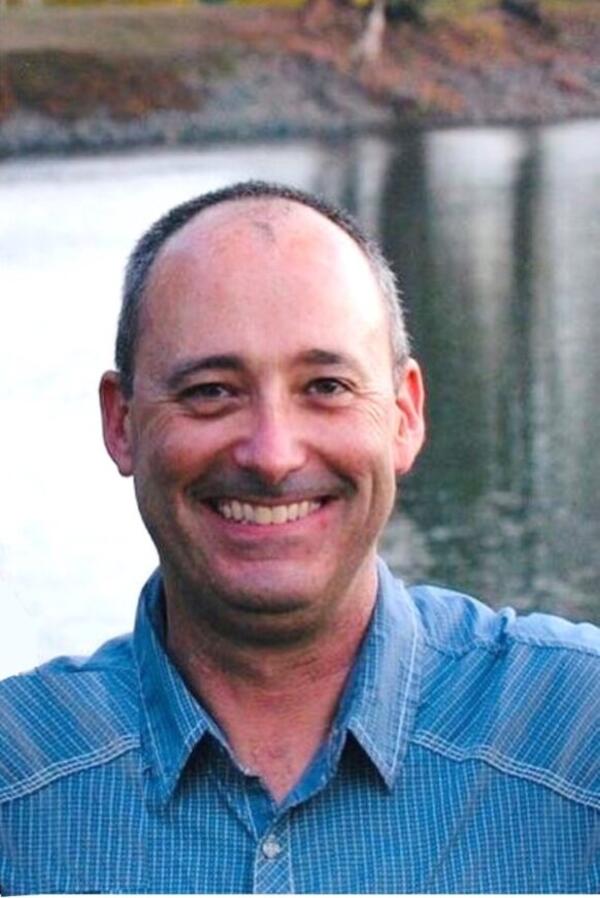Lake Abert, Oregon is one of the 20 terminal lakes identified by USGS partners as priority ecosystems for study by the Saline Lakes Ecosystems IWAA.
Images
Lake Abert, Oregon is one of the 20 terminal lakes identified by USGS partners as priority ecosystems for study by the Saline Lakes Ecosystems IWAA.
Goose Lake, on the Oregon-California border, is one of the 20 terminal lakes identified by USGS partners as priority ecosystems for study by the Saline Lakes Ecosystems IWAA.
Goose Lake, on the Oregon-California border, is one of the 20 terminal lakes identified by USGS partners as priority ecosystems for study by the Saline Lakes Ecosystems IWAA.
Observing southern sea otter foraging behavior from San Nicolas Island, California.
Observing southern sea otter foraging behavior from San Nicolas Island, California.

Summer Lake, Oregon is one of the 20 terminal lakes identified by USGS partners as priority ecosystems for study by the Saline Lakes Ecosystems IWAA.
Summer Lake, Oregon is one of the 20 terminal lakes identified by USGS partners as priority ecosystems for study by the Saline Lakes Ecosystems IWAA.
This gif provides a preview of the output of the trends application and shows how a user can click between tabs in the tool to access the results. The tool allows the user to explore population abundance and growth rates within their area of interest across all population low points. The tool outputs are provided in map, figure, and table formats.
This gif provides a preview of the output of the trends application and shows how a user can click between tabs in the tool to access the results. The tool allows the user to explore population abundance and growth rates within their area of interest across all population low points. The tool outputs are provided in map, figure, and table formats.

Trend estimation calculated from seven nadirs defining six unique periods of complete population oscillation
linkTrend estimation calculated from seven nadirs defining six unique periods of complete population oscillation. Purple lines indicate periods of erroneous inference about population trend. Green lines indicate nadir-to-nadir inference and more accurate trend estimation.
Trend estimation calculated from seven nadirs defining six unique periods of complete population oscillation
linkTrend estimation calculated from seven nadirs defining six unique periods of complete population oscillation. Purple lines indicate periods of erroneous inference about population trend. Green lines indicate nadir-to-nadir inference and more accurate trend estimation.

Damian Higgins serves as one of two Research Managers for the USGS Western Ecological Research Center.
Damian Higgins serves as one of two Research Managers for the USGS Western Ecological Research Center.

Each dot is a GPS location collected between 2015-2023.
Each dot is a GPS location collected between 2015-2023.
A team of biologists prepares to measure, weigh, and tag a captured bats. On the left, USGS biologist Gabe Reyes has a bat in a bag, used to separate and calm the bats. USGS biologist Julia Ersan is holding some alcohol used to ensure clean instruments and work surfaces, and USGS biologist Austin Waag is getting something out of a backpack.
A team of biologists prepares to measure, weigh, and tag a captured bats. On the left, USGS biologist Gabe Reyes has a bat in a bag, used to separate and calm the bats. USGS biologist Julia Ersan is holding some alcohol used to ensure clean instruments and work surfaces, and USGS biologist Austin Waag is getting something out of a backpack.
A female Wilson’s phalarope with 2-gram Sunbird PTT transmitter. Wilson's phalaropes spin around in the water to stir up invertebrates to snack on. Large flocks gather on terminal lakes in the American west before migrating as far as southern most South America.
A female Wilson’s phalarope with 2-gram Sunbird PTT transmitter. Wilson's phalaropes spin around in the water to stir up invertebrates to snack on. Large flocks gather on terminal lakes in the American west before migrating as far as southern most South America.
Mountain yellow-legged frog habitat found in a riparian area of Los Angeles County.
Mountain yellow-legged frog habitat found in a riparian area of Los Angeles County.
Mountain yellow-legged frogs (Rana muscosa) in their transport containers being acclimated to their new habitat, Los Angeles County.
Mountain yellow-legged frogs (Rana muscosa) in their transport containers being acclimated to their new habitat, Los Angeles County.
Newly released mountain yellow-legged frogs (Rana muscosa), Los Angeles County. Mountain yellow-legged frogs were bread and captivity then released.
Newly released mountain yellow-legged frogs (Rana muscosa), Los Angeles County. Mountain yellow-legged frogs were bread and captivity then released.
Research in the field means making the most of your surroundings! Scientist Andrea Mott set up this work station on the dry lake bed of Lake Abert to get the birds banded with GPS trackers close to where they were captured.
Research in the field means making the most of your surroundings! Scientist Andrea Mott set up this work station on the dry lake bed of Lake Abert to get the birds banded with GPS trackers close to where they were captured.
Austin Waag performing radio-telemetry at Glacier Point with Half Dome in the background, as part of a project tracking bats in Yosemite National Park.
Austin Waag performing radio-telemetry at Glacier Point with Half Dome in the background, as part of a project tracking bats in Yosemite National Park.

Biologists set up a triple-high mist net to capture bats with El Capitan, one of Yosemite's most iconic rock formations, in the background, as part of a study to track bats in Yosemite.
Biologists set up a triple-high mist net to capture bats with El Capitan, one of Yosemite's most iconic rock formations, in the background, as part of a study to track bats in Yosemite.
A community of intact biocrusts dominated by cyanobacteria was spotted during a biocrust and vegetation survey at a horse disturbance plot in Caliente, NV. The pinnacles were ~3-7cm in height.
A community of intact biocrusts dominated by cyanobacteria was spotted during a biocrust and vegetation survey at a horse disturbance plot in Caliente, NV. The pinnacles were ~3-7cm in height.

The Saline Lake Ecosystems IWAA Waterbird Movement Project began tagging American Avocets in March 2023 to track their movements across the landscape. Tracking data from these birds will help scientists better understand why these birds choose to use the terminal lake and wetland habitats they do in the Great Basin.
The Saline Lake Ecosystems IWAA Waterbird Movement Project began tagging American Avocets in March 2023 to track their movements across the landscape. Tracking data from these birds will help scientists better understand why these birds choose to use the terminal lake and wetland habitats they do in the Great Basin.
Lake Abert, Oregon is one of the 20 terminal lakes identified by USGS partners as priority ecosystems for study by the Saline Lakes Ecosystems IWAA.
Lake Abert, Oregon is one of the 20 terminal lakes identified by USGS partners as priority ecosystems for study by the Saline Lakes Ecosystems IWAA.

In this sagebrush community, there are intact biological soil crusts that are composed of cyanobacteria, lichens and mosses. Phlox sp. are growing abundantly on these biocrust communities.
In this sagebrush community, there are intact biological soil crusts that are composed of cyanobacteria, lichens and mosses. Phlox sp. are growing abundantly on these biocrust communities.
This is a community of biological soil crusts including scale lichens, crustose lichens, mosses, and cyanobacteria.
Biological soil crusts are an intimate association of soil particles, cyanobacteria, algae, lichens, bryophytes, and microfungi which live within or directly on top of the uppermost millimeters of soil. (Belnap, 2003)
This is a community of biological soil crusts including scale lichens, crustose lichens, mosses, and cyanobacteria.
Biological soil crusts are an intimate association of soil particles, cyanobacteria, algae, lichens, bryophytes, and microfungi which live within or directly on top of the uppermost millimeters of soil. (Belnap, 2003)















